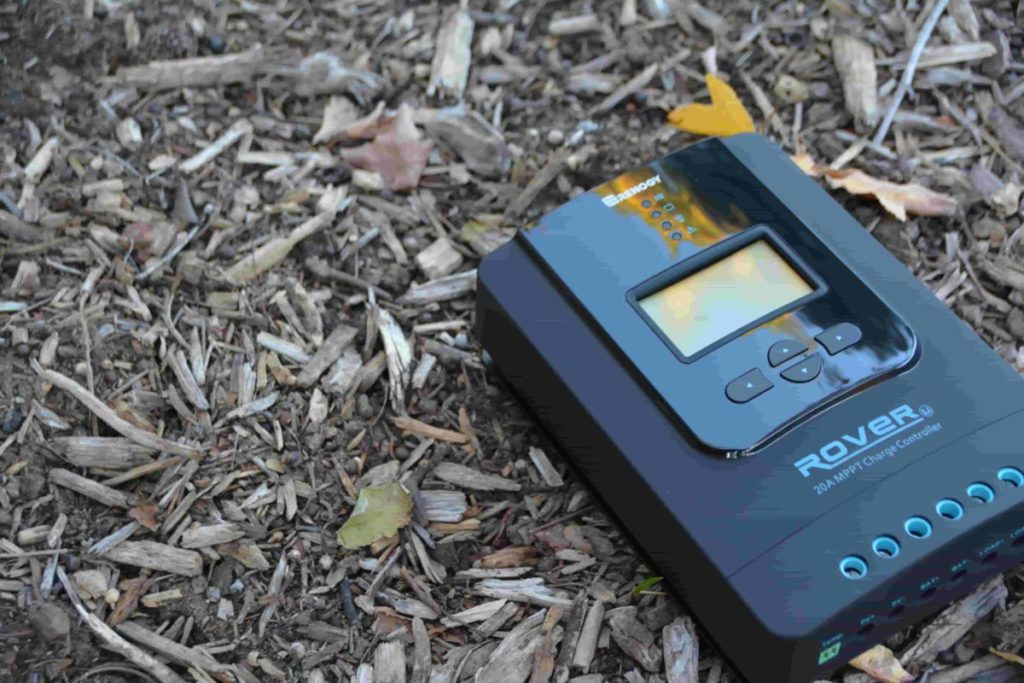When it comes to maintaining the health and longevity of your battery banks, a reliable charge controller is non-negotiable.
Overcharging or undercharging can cause irreversible damage, but with a solid charge controller, you can rest assured that your batteries are in good hands.
We will explore the importance of protecting your batteries from overcharge and undercharge, and how a high-quality charge controller can help you achieve just that.
From preventing premature aging to avoiding catastrophic failures, learning how to properly protect your batteries is essential for any off-grid or renewable energy system owner.
Let’s dive in and discover the key features of a solid charge controller and why they are vital for long-term battery health.
Overcharge protection
A solid charge controller will have built-in overcharge protection to prevent overcharging of the batteries, which can damage or destroy them.
That’s why a solid charge controller will feature built-in overcharge protection.
This protection works by monitoring the voltage of your batteries and stopping the charge cycle when the voltage reaches a predetermined level.
This prevents the batteries from being overcharged, which can lead to a range of negative consequences, including reduced capacity, reduced lifespan, and even catastrophic failure.
In addition, some charge controllers may also feature automatic desulfation, which helps to remove sulfation from the battery plates, improving overall battery health and extending its lifespan.
By choosing a charge controller with overcharge protection, you can ensure that your batteries are safe from overcharging and continue to perform at their best.
Undercharge protection
Solid charge controllers will also have undercharge protection to prevent the batteries from being discharged too low, which can also damage them.
When using solar panels to charge your batteries, it’s essential to ensure that the batteries are not over-discharged.
Over-discharge can cause permanent damage to the batteries, leading to reduced capacity and lifespan.
Solid charge controllers with undercharge protection can help prevent this issue by monitoring the battery voltage and disconnecting the solar panel input when the battery voltage falls below a certain threshold.
This ensures that the batteries are never discharged too low, thereby prolonging their lifespan and avoiding damage.
Undercharge protection can also help prevent boil-off, which can occur when the batteries are left unused for extended periods.
Boil-off is a condition where the battery charge leaks back into the solar panel, causing a loss of charge and potentially damaging the battery.
By preventing over-discharge and boil-off, solid charge controllers with undercharge protection can help protect your batteries and ensure they last as long as possible.
Termination voltage
The charge controller will have a termination voltage setting to determine when the charging process should stop, preventing overcharging.
The termination voltage setting in a charge controller is a important feature that helps prevent overcharging of the battery.
When the battery is fully charged, the termination voltage setting kicks in and stops the charging process.
This setting is typically set to a voltage slightly higher than the fully charged voltage of the battery, such as 14.4V for a 12V battery.
By stopping the charging process when the voltage reaches this level, the charge controller prevents overcharging, which can damage the battery and reduce its lifespan.
The termination voltage setting ensures that the battery is never over-discharged, which can also damage the battery and reduce its lifespan.
By properly setting the termination voltage, users can ensure that their battery is always charged to the optimal level, maximizing its performance and lifespan.
Low-voltage cutoff
A solid charge controller will have a low-voltage cutoff setting to prevent the batteries from discharging too low, which can damage them.
A important feature of any solid charge controller is the low-voltage cutoff setting.
This feature is designed to prevent the batteries from discharging too low, which can cause damage to the batteries and potentially lead to premature failure.
When the voltage of the batteries falls below a certain threshold, the charge controller will disconnect the solar panel from the batteries to prevent any further discharge.
This protective measure ensures that the batteries are not subjected to deep discharge cycles, which can reduce their overall lifespan and capacity.
In fact, some high-quality charge controllers even allow you to adjust the low-voltage cutoff setting to suit your specific battery chemistry and application requirements.
By implementing a low-voltage cutoff setting, you can enjoy peace of mind knowing that your batteries are safe from excessive discharge and will maintain their optimal health for years to come.
High-temperature shutdown
The charge controller will have a high-temperature shutdown setting to prevent overheating of the batteries and the charge controller, which can cause damage or even fires.
When the ambient temperature of the battery bank exceeds a certain threshold, the charge controller will initiate a high-temperature shutdown to prevent overheating of the batteries and the charge controller itself.
This feature is designed to protect the batteries from damage caused by excessive heat, which can lead to a decrease in their capacity and lifespan, as well as prevent the risk of fires caused by overheated electrical components.
The high-temperature shutdown setting is typically adjustable, allowing you to customize the temperature threshold that triggers the shutdown based on your specific application and environmental conditions.
Once the shutdown is activated, the charge controller will disconnect the batteries from the charging source and prevent any further charging or discharging until the temperature drops below the threshold, ensuring safe and reliable operation of the battery bank.
Low-current limiting
Solid charge controllers will have low-current limiting settings to prevent the batteries from being over-discharged, which can also damage them.
Low-current limiting is a critical feature that solid charge controllers incorporate to protect your batteries from over-discharge, which can cause damage and reduce their lifespan.
This feature ensures that the charge controller prevents the batteries from discharging below a certain voltage threshold, typically set between 2.5 and 3.0 volts per cell for lead-acid batteries.
By preventing deep discharges, low-current limiting helps maintain the health and longevity of your batteries.
When the load current is low, the charge controller will limit the current to prevent the batteries from discharging too far.
This is particularly important for deep cycle batteries that are designed for heavy-duty use and have a limited number of cycles before they need to be replaced.
Low-current limiting helps prevent damage to the battery’s internal components, such as the plate and grid structure, which can occur when the battery is deeply discharged.
To take advantage of this feature, you should set the low-current limiting threshold appropriately based on the type and capacity of your batteries, as well as the desired discharge rate.
Consult the manufacturer’s guidelines for the recommended settings for your specific charge controller and battery configuration.
By carefully adjusting this setting, you can ensure that your batteries are always protected from over-discharge and that your system operates efficiently and safely.
Overvoltage protection
The charge controller will have overvoltage protection to prevent the batteries from being overcharged, which can damage them.
Overvoltage protection is a critical feature in any charge controller designed for Lithium-ion batteries.
Without this protection, the batteries can be easily overcharged, which can lead to premature aging, reduced capacity, or even complete battery failure.
The charge controller’s overvoltage protection mechanism kicks in when the battery voltage exceeds a predetermined threshold, usually around 4.2 volts for a typical Lithium-ion battery.
When this occurs, the charge controller will gradually reduce the charging current to prevent the battery from overcharging.
This can be achieved through a variety of methods, such as reducing the charging voltage, lowering the current, or even disconnecting the charging circuit entirely.
By preventing overvoltage conditions, the charge controller ensures that the batteries are always charged within safe limits, thereby prolonging their lifespan and optimizing their performance.
When selecting a charge controller for your Lithium-ion battery-powered system, make sure to look for this essential feature to protect your investment and ensure safe and reliable operation.
Multiple battery types
Solid charge controllers can support multiple battery types, including lead-acid, lithium-ion, and nickel-based batteries, making them versatile and suitable for a wide range of applications.
Solid charge controllers offer unparalleled versatility by supporting multiple battery types, including lead-acid, lithium-ion, and nickel-based batteries.
This makes them ideal for a wide range of applications, from traditional lead-acid batteries used in automotive and telecom industries to the latest lithium-ion batteries used in high-performance electric vehicles and renewable energy systems.
By supporting multiple battery types, solid charge controllers can effectively optimize the charging and discharging processes for each battery chemistry, resulting in improved efficiency, longer battery life, and reduced maintenance costs.
This versatility allows users to easily switch between different battery types as needed, providing the ultimate in flexibility and convenience.
With solid charge controllers, you can easily adapt to changing market demands and seamlessly integrate new technologies as they become available, ensuring that your applications remain cutting-edge and competitive.
Want More? Dive Deeper Here!
Hey there! If you’re the type who loves going down the rabbit hole of information (like we do), you’re in the right spot. We’ve pulled together some cool reads and resources that dive a bit deeper into the stuff we chat about on our site. Whether you’re just killing time or super into the topic, these picks might just be what you’re looking for. Happy reading!






